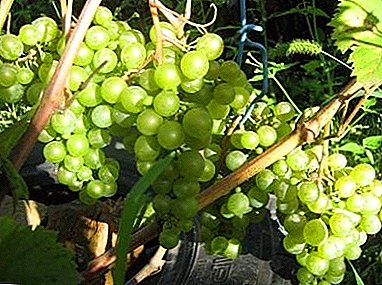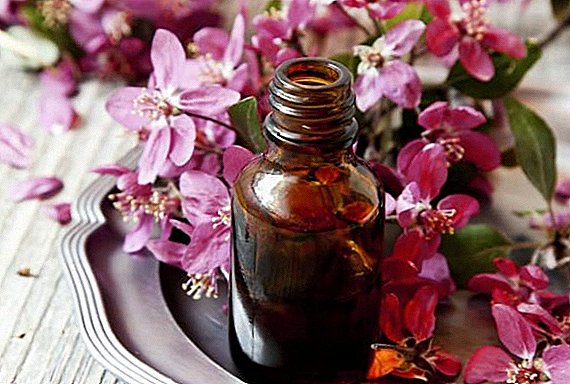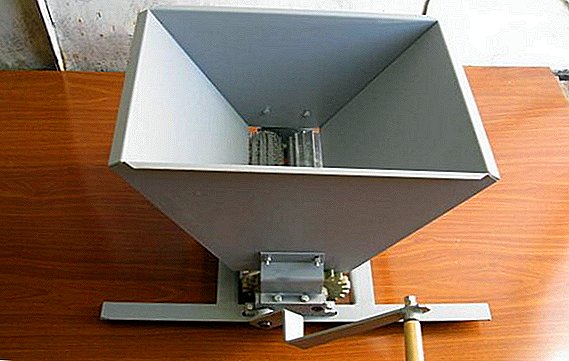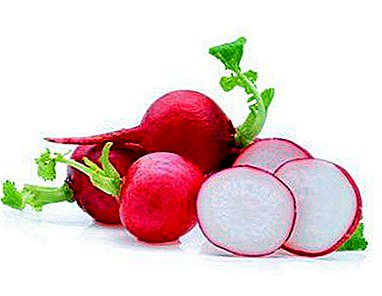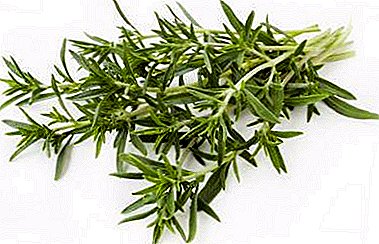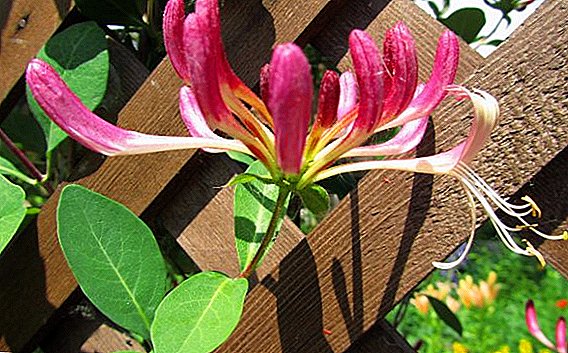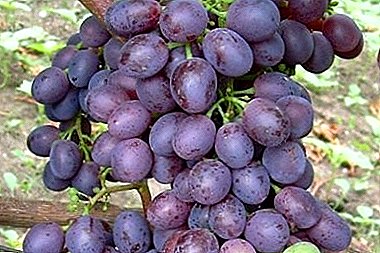 Among the variety of varieties of sweet pepper, you can separately select the "ox ear". This variety occupies one of the leading positions in this segment. Taste, appetizing appearance and good transportability add popularity among summer residents. In this article, we consider the description, characteristics, characteristics of care and cultivation of this variety.
Among the variety of varieties of sweet pepper, you can separately select the "ox ear". This variety occupies one of the leading positions in this segment. Taste, appetizing appearance and good transportability add popularity among summer residents. In this article, we consider the description, characteristics, characteristics of care and cultivation of this variety.
Description and photo

Bushes
In the “Bull's-ear” variety, medium-sized bushes with dense stem, branched foliage and reach no more than 70 cm in height.
Check out such varieties of pepper as "Bogatyr", "Claudio", "Habanero", "Ratunda", "California miracle", "Gypsy".Because of the large sheets, the heat is poorly tolerated, and when grown in a greenhouse, the condensate that appears on the leaves will be disastrous.

Fruit
In this variety, the fruits are elongated, conical in shape, corrugated and resemble the ear of an ox in shape, which is why they got their name. The size of ripe pepper is quite large, reaching an average of 12-16 cm.
In its immature state, the color of the fruit is dark green, and when ripe it is bright red with a glossy shine. Below is a photo. 
Characteristic variety
Mid-early (mid-season) variety with very sweet, juicy, dense and fleshy fruits. The density of the walls of the mature fruit reaches from 6 to 8 mm. The largest peppers weigh 200-250 grams, but an average of 120-150 grams is a normal indicator for yield.
From one bush “ox-ear” the yield is 2-3 kilograms. It has wilt resistance and tolerates transportation well. Ideal for both fresh salads, and for canning, well preserved when frozen.
Did you know? ATalkaloid capsaicin gives a special taste of pepper. It also stimulates the secretion of the pancreas and stomach, helps to reduce blood pressure, dilutes the blood, thus preventing the formation of blood clots.
Advantages and disadvantages
The advantages of this variety are many:
- ideal for growing both in the household and for industrial purposes;
- can be grown both in greenhouses and in the open field;
- high-yielding, up to 3 kg from a bush;
- excellent taste, even in fruits of technical maturity (painted in green);
- resistant to many diseases;
- perfectly preserved during transport.

Among the shortcomings can be identified:
- poor seed germination;
- poorly tolerated pick;
- does not like extreme heat and too low temperatures.
Important! In the presence of growing nearby peppers, peppers may pereopilyatsya, which adversely affects the taste (bitterness or sourness may appear).
Landing features
The process of growing this variety will take 95-100 days from planting seeds or 70-75 days from planting seedlings into the ground. Sowing usually on March 10-20 in the soil prepared for seedlings, planting of seedlings - May 10-20, harvesting from July 25 to August 30. Seeds need:
- fill with water and select those that remained on the bottom (do not contain sprouts);
- leave for a few days for swelling;
- process a weak solution of potassium permanganate;
- rinse with lukewarm water;
- land 3-4 pieces. in prepared tanks with a diameter of 3-4 cm (in boxes it is not recommended due to poor portability of a dive, as the root system is poorly developed);
- Cover with foil and put in a warm place.

Important! It is desirable to mix the soil for seedlings with the soil in which peppers will later be planted. This will help to avoid stress and quickly acclimatize to a permanent place.The field of emergence of sprouts is necessary to remove the film and grow to full-fledged bushes seedlings. For habituation of plants to grow in the soil, seedlings are recommended to take to the balcony for hardening.
Planting seedlings in the ground has its own characteristics: because of the branching of the bushes, the distance between them should not exceed 50-60 cm. Favorable soil for planting will be fed with organic fertilizers or after siderats grow.
Important! You should not plant seedlings in the place where the nightshade, such as potatoes or tomatoes, grew in the previous year. The soil after them is exhausted.
Grade Care
Pepper seedlings are grown at a temperature of +18 ° C to +25 ° C and regular watering.  Bushes planted in the garden must be loosened and weeds removed. Watering should be at least twice a week: before flowering - on top of the bushes rain method, and after - just at the root.
Bushes planted in the garden must be loosened and weeds removed. Watering should be at least twice a week: before flowering - on top of the bushes rain method, and after - just at the root.
Water should not be too cold.
For larger fruits and more yield, the soil must be fertilized twice with manure, compost, phosphate, or chicken manure.
Learn also how to feed seedlings of peppers, about yeast top dressing for peppers, about the basic rules for feeding peppers in a greenhouse.For the preservation of the bushes with a height of about 70 cm and with a large number of fruit, it is necessary to make supports and tie up the stems.
Pacenki better to remove - then the fruits will be larger. In case the “ox-ear” pepper is grown in the greenhouse, then it is necessary to ventilate periodically to prevent the occurrence of condensate, which leads to dropping of flowers.  Too high or low temperatures can be disastrous for bushes. No need to be treated with insecticides in case of unwanted insects. When you follow these recommendations, the bushes will bear fruit until the very end of summer.
Too high or low temperatures can be disastrous for bushes. No need to be treated with insecticides in case of unwanted insects. When you follow these recommendations, the bushes will bear fruit until the very end of summer.
Did you know? The content of nutrients in the composition of sweet pepper is superior to many other cultures. It includes carotene, ascorbic acid, vitamins B1, B2, P, PP, C, calcium, mineral salts, iron, potassium, sodium, magnesium, iodine, etc.
Diseases and pests
The “ox ear” is resistant to diseases such as verticillis and phytoplasmosis. May be affected by such pests as:
- aphid. Must be treated with insecticides;
- Colorado beetle. Sprayed with celandine tincture;
- slugs are naked. They need to be destroyed, and the plants sprinkled with tobacco dust. Sprinkle the soil around the plant with mustard;
- spider mite A solution of tincture of garlic and onion with the addition of liquid soap will help.
 Sweet pepper varieties "Ox-ear" - one of the leaders in the reviews and recommendations among summer residents and gardeners. Since this variety is ideal for growing in our latitudes, this pepper will annually delight you with its taste and quantity of the crop.
Sweet pepper varieties "Ox-ear" - one of the leaders in the reviews and recommendations among summer residents and gardeners. Since this variety is ideal for growing in our latitudes, this pepper will annually delight you with its taste and quantity of the crop.

